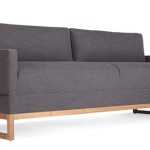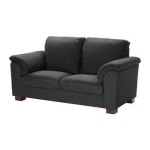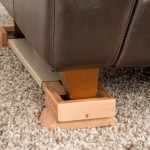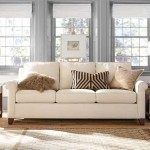How Much Does It Cost to Upholster a Sofa?
Upholstering a sofa is a significant investment that can breathe new life into a beloved piece of furniture, transforming its appearance and extending its lifespan. However, determining the cost of upholstery is not a simple calculation. It involves a complex interplay of factors, making it essential to understand the variables involved to budget effectively and make informed decisions. This article will explore the various elements that contribute to the overall cost of sofa upholstery.
The decision to reupholster a sofa often hinges on a comparison of cost versus replacement. While a new sofa might seem like the straightforward option, reupholstering can be more economical, particularly for high-quality, antique, or custom-built pieces. Additionally, reupholstering aligns with sustainable practices by reducing waste and preserving existing furniture, a benefit increasingly valued by environmentally conscious consumers.
Before delving into specific costs, it's crucial to understand what the reupholstery process entails. It typically involves removing the old fabric, inspecting and repairing the frame, replacing worn-out padding and springs, and finally, applying the new fabric. The complexity of this process directly impacts the labor costs, a significant component of the overall expense.
Fabric Choice: The Primary Cost Driver
The fabric selected for reupholstery is often the most significant cost factor. Fabric prices vary dramatically based on material, weave, pattern, and brand. Natural fabrics like cotton, linen, and wool generally range from moderate to high in price, offering durability and breathability. Synthetic fabrics such as polyester and microfiber are typically more affordable and resistant to stains, but can feel less luxurious. High-end fabrics, including silk, velvet, and leather, command premium prices due to their aesthetic qualities, inherent texture, and potential longevity.
The yardage required also contributes significantly to the final cost. Larger sofas, sofas with intricate designs, and patterns requiring careful matching will necessitate more fabric. It is advisable to consult with an upholstery professional to accurately estimate the amount of fabric needed, as overestimating can lead to unnecessary expense, and underestimating can result in project delays and additional costs.
Beyond the cost per yard, factors such as stain resistance, durability, and cleaning requirements should be considered when selecting a fabric. A less expensive fabric that requires frequent cleaning or is prone to wear and tear may ultimately be less cost-effective in the long run than a more durable, higher-priced option.
Furthermore, special treatments like stain-resistant finishes or fire-retardant applications can add to the fabric cost. While these treatments increase the overall expense, they can also enhance the lifespan and safety of the upholstered sofa.
The complexity of the pattern influences fabric costs. Intricate patterns, such as stripes or large floral designs, require careful matching during the upholstery process. This often necessitates purchasing additional fabric to ensure a seamless and aesthetically pleasing result. Solids and subtle textures typically require less fabric and are easier to work with, potentially reducing overall labor costs.
Labor Costs: Skill and Complexity Matter
Labor costs constitute a substantial portion of the total reupholstery expense. These costs are primarily determined by the upholsterer's skill, experience, and the complexity of the sofa's design. Highly skilled upholsterers with years of experience typically charge higher rates, reflecting their expertise and ability to handle intricate projects with precision.
The complexity of the sofa's design significantly impacts labor hours. Sofas with elaborate detailing, tufting, or unusual shapes require more time and expertise to reupholster than simpler, more streamlined designs. Removing the old fabric, disassembling the sofa, making necessary repairs to the frame, and precisely applying the new fabric all contribute to the total labor time.
The condition of the sofa's frame also influences labor costs. If the frame requires extensive repairs, such as reinforcing joints or replacing broken components, additional labor will be necessary. A thorough inspection of the frame before beginning the reupholstery process can help identify potential issues and provide a more accurate cost estimate.
Geographic location can also affect labor rates. Metropolitan areas with higher costs of living generally have higher upholstery labor rates compared to rural areas. Researching local upholstery professionals and comparing their rates is advisable to ensure a competitive price.
The process of removing existing upholstery can add to labor costs, especially if the original fabric is heavily stapled or glued. In some cases, the underlying padding or springs may need replacement or repair, further increasing the labor time. A comprehensive assessment of the sofa's condition by a qualified upholsterer is crucial for accurate cost estimation.
Some upholsterers charge by the hour, while others provide a fixed price for the entire project. Understanding the upholsterer's pricing structure and obtaining a detailed written estimate is essential to avoid unexpected costs. The estimate should clearly outline the scope of work, including fabric removal, frame repairs, padding replacement, and fabric installation.
Additional Materials and Services: Hidden Expenses
Beyond fabric and labor, various additional materials and services can contribute to the overall cost of sofa reupholstery. These expenses often go unnoticed initially but can significantly impact the final budget. Padding replacement is a common expense. Over time, sofa cushions and padding can become compressed, worn, or soiled. Replacing these materials with new foam, batting, or down filling can significantly improve the sofa's comfort and appearance.
Spring repair or replacement is another potential cost. If the sofa's springs are sagging, broken, or noisy, they may need to be repaired or replaced. This can involve retightening existing springs, replacing individual springs, or installing an entirely new spring system. The type of spring system, such as coil springs or sinuous springs, will influence the cost of repair or replacement.
Frame repair is a critical consideration. A weak or damaged frame can compromise the structural integrity of the sofa and affect its longevity. Reinforcing joints, repairing cracks, or replacing damaged frame components will incur additional costs. The extent of the frame damage will determine the amount of labor and materials required for repair.
Buttoning and tufting can add to the overall expense. Sofas with buttoned or tufted designs require specialized techniques and additional labor to reupholster. The number of buttons or tufts, as well as the complexity of the pattern, will influence the cost.
Piping and welting are decorative elements that can enhance the appearance of the upholstered sofa. Adding piping or welting involves creating and installing fabric-covered cords along the edges of the sofa. This requires additional fabric and labor, increasing the overall cost.
Delivery and pickup charges should also be factored into the budget. Transporting the sofa to and from the upholstery shop can incur additional expenses, especially for large or heavy pieces. Some upholsterers offer free pickup and delivery services, while others charge a fee based on distance and sofa size.
Cleaning and protecting the newly upholstered sofa is an important consideration. Applying a stain-resistant treatment or purchasing a protective cover can help prolong the life of the fabric and prevent future stains. These preventative measures can add to the initial cost but can save money in the long run by reducing the need for professional cleaning or future reupholstery.
Custom cushions can drastically change the look of a sofa if you decide to change from a standard back to a scatter back. The price of custom cushions can vary in price depending on the type of interior filling you choose, foam, feather, a mixture of the two. Also, the more cushions, the more expensive. The type of fabric and the size of the cushions will also impact the price.
In conclusion, the cost of reupholstering a sofa is dependent on a variable number of factors and is not necessarily a cheap undertaking. Considering these factors before committing to the process will ensure that the consumer is aware of all potential costs involved in reupholstering their sofa.

Sofa Fabric Estimator Calculator How Much To Cover A

How Much Fabric Do You Need For Reupholstering Upholstery Diy Sofa

Fixr Com Cost To Reupholster Couch Sofa Upholstery

Fixr Com Cost To Reupholster Couch Sofa Upholstery

Fixr Com Cost To Reupholster Couch Sofa Upholstery

Sofa Reupholstery In Atlanta Ga

Cost To Reupholster A Couch Save By Recovering We Can Fix That

Fixr Com Upholstery Cleaning Cost Couch

Do It Yourself Divas Diy Strip Fabric From A Couch And Reupholster

How Much Upholstery Fabric Do I Need Just Fabrics








